Affiliate disclosure: This post may contain affiliate links. Please see our Privacy Policy.
Brahma chickens are the gentle giants of the backyard chicken world. They’re one of the biggest chicken breeds, but also one of the friendliest, with a calm and easy going disposition.
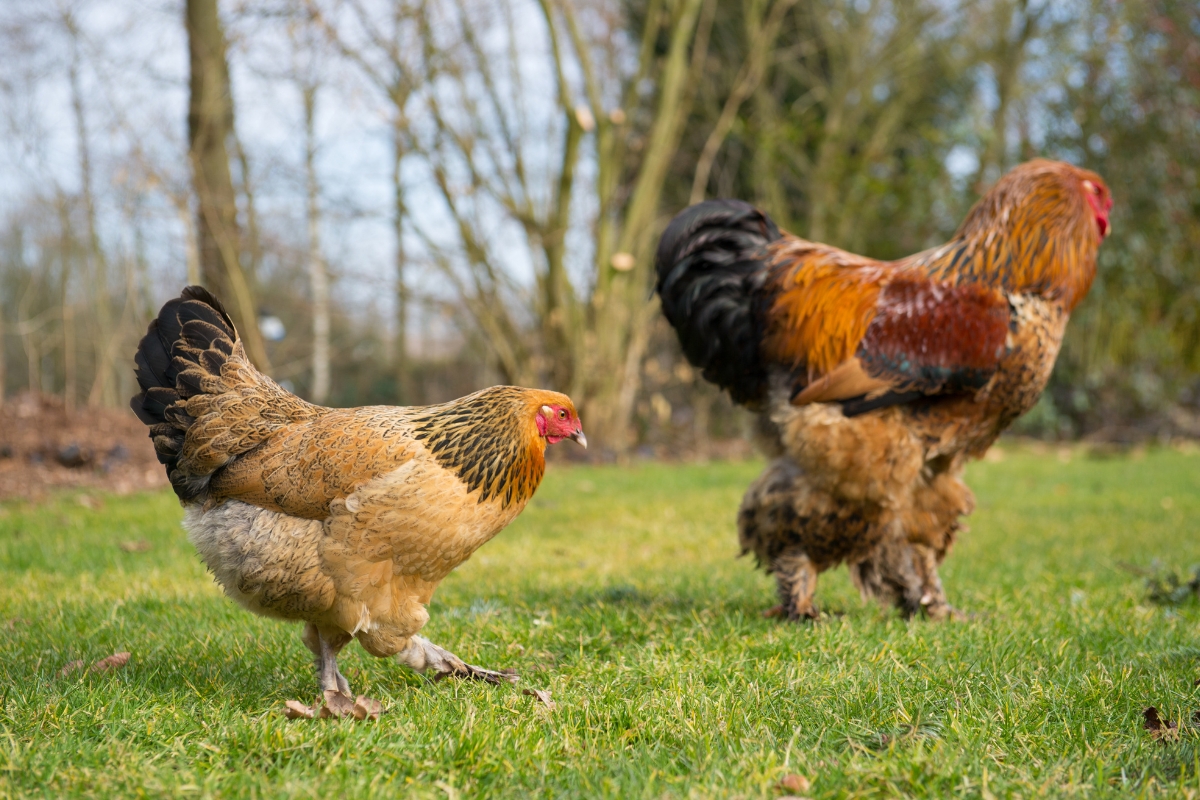
This article is written by Rea Yoh, a freelance writer who grew up in rural Illinois, raising backyard chickens. She graduated with honors in Biology and Science, Technology, and Society from Brown University, and her background in research helps her get to the heart of any question. She has a passion for animals, the environment, and sustainable living.
What are Brahma Chickens?
Brahma chickens are a breed of chicken developed in the United States in the mid-1800s with roots in Asia. It’s not surprising that Brahmas were originally bred to be meat birds–they’re known for being some of the biggest around.
They’re pretty good layers, and you might be surprised to see that they lay average-sized eggs. Despite their imposing appearance, Brahmas are the definition of gentle giants.
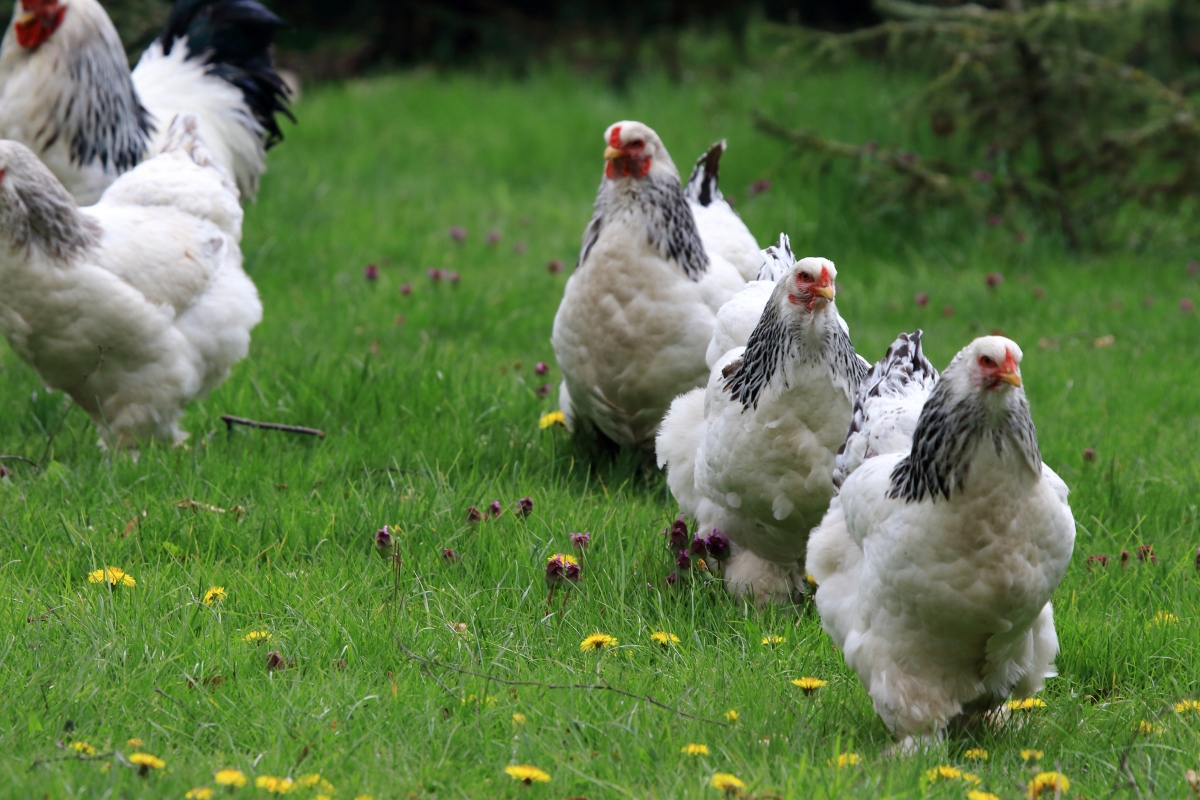
Pros and Cons of Brahma Chickens
Brahma chickens are friendly, easy going dual purpose chickens that make great backyard pets, but as with any animal, they have their pros and cons.
Pros
- Good egg layers
- Produce a lot of meat
- Friendly, gentle, and calm companion birds
- Heritage breed
- Tolerates confinement and enjoys free range
- Can’t fly far, easy to contain
- Size deters aerial predators
- Healthy breed
- Very cold-hardy
- Great winter egg layers
Cons
- Feathered legs can cause health problems
- Consumes a lot of food
- Does not tolerate heat
- Hens can be broody
- Hens can accidentally crush or kill eggs and chicks
- Inability to fly and run quickly makes them easy targets for land predators
Brahma Chicken Characteristics
There is a lot of controversy surrounding the origins of Brahma chickens–their ancestry is not well-documented, and at one point, the breed had twelve different names! Gray Shanghai, Chittagong, Cochin China, Brahma Pootra… The original breeder of the Brahma wanted to sensationalize foreign chickens so he could get more money for them.
The breed that we know today as the Brahma originated in the US and arose from chickens that were imported from Shanghai (most likely Cochins), but many places claim to have given rise to the Brahma. Chittagong fowl, which originated in Bangladesh, might have been bred with Chinese chickens to create the Brahma. Malay birds might also have been part of the Brahma bloodline. Nevertheless, the breed was quickly standardized after it arrived in the US. A group of poultry judges in Boston recognized the breed as the “Brahmaputra”, after the namesake river in Bangladesh where it supposedly originated.
B. Miner, author of Miner’s Domestic Poultry Book, shortened “Brahmaputra” to “Brahma”, because he didn’t have enough space to write out the full word. The name stuck.
The first type of Brahma to be developed was the Light Brahma, which was accepted into the American Standard of Perfection in 1874. After a chicken breeder named George Burnham sent some of his stock to Queen Victoria of England, breeders in the UK created the Dark Brahma. The queen loved these birds. There was a huge boom in the popularity of poultry in England, and Brahmas led the pack as one of the most well-known breeds. Dark Brahmas were brought to the US and were accepted into the American Standard of Perfection alongside the Light Brahmas in 1874.
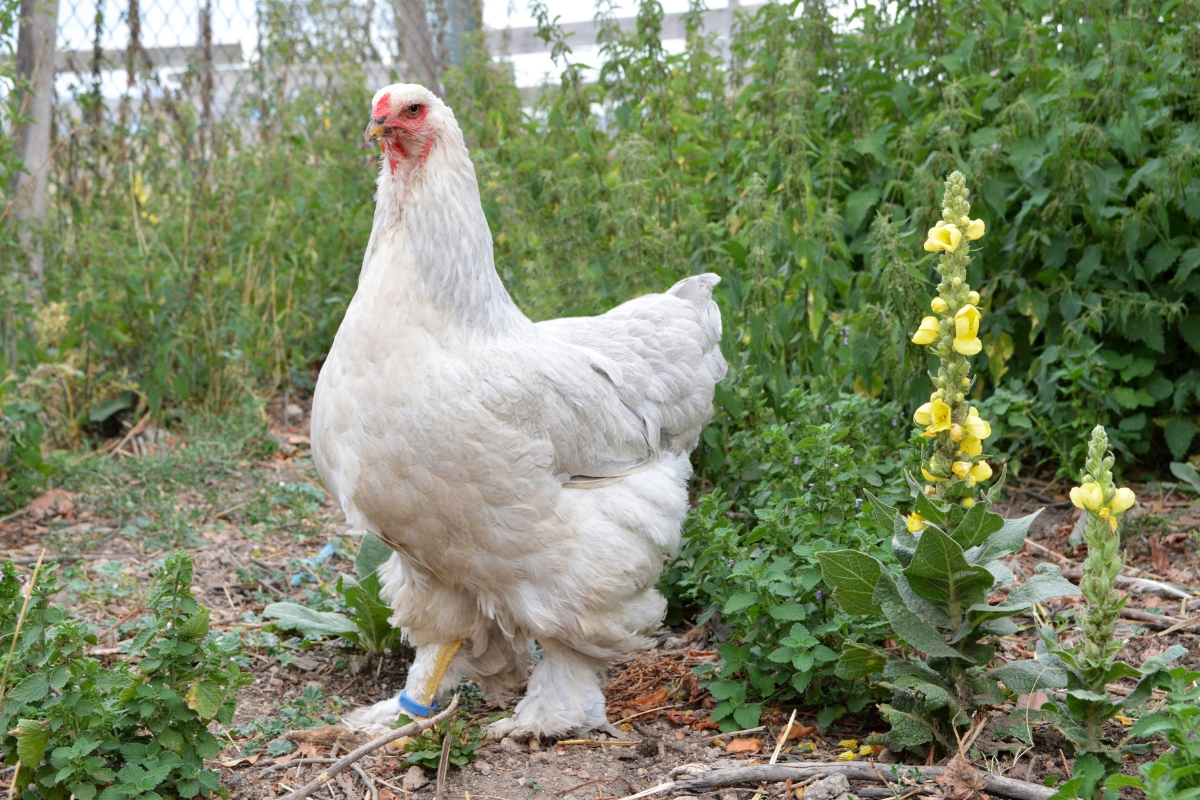
There were a few differences between early Light and Dark Brahmas. Light Brahmas were created to be meat birds and were around a pound heavier than the Dark Brahmas, which were still used for meat but were bred to prioritize coloration. The patterns of the Dark Brahma were harder to create but definitely beautiful–silver triple penciled birds were sought after by poultry purveyors.
In 1874, the American Poultry Association welcomed the Light and Dark Brahma as standardized breeds. The Buff Brahma followed in 1924. Despite fueling the popularity of chicken breeding in both the US and UK (“Hen-Fever” as it is known today), Brahmas quickly dropped from people’s radars when other meat and egg laying breeds were developed. Brahmas and many other Asiatic breeds became rare. These beautiful birds are once again becoming popular as a heritage breed and are recovering, according to the Livestock Conservancy.
Today, there are three types of Brahma that are recognized by the American Poultry Association: the Light, Dark, and Buff Brahma. They also come in many other colors. As a heritage breed, Brahmas are now gaining popularity once again.
- Breed Name: Brahma
- Breed Type: Dual-purpose (meat and eggs)
- Temperament: Laid-back, docile, easygoing.
- Size: Large males: 10 lbs; large females: 8 lbs. Bantam roosters: 38 oz bantam hens: 34 oz
- Eggs Per Year: 150-200
- Eggs per Week: 3-4
- Egg Size: Medium
- Egg Color: Brown
- Lifespan: 5-8 years
- Time To Maturity: 6-7 months for laying, can be used at 8-10 weeks for meat
Brahma Breed Standard
Known as the “King of Chicken Breeds”, the Brahma is the second largest type of chicken, outclassed only by the Jersey Giant. The American Poultry Association dictates that a rooster weigh 10 lbs and a hen weigh 8 lbs. They grow to a height of around 30 inches. They should have neat pea combs. Their eyes are deep reddish-brown. Brahmas have broad, wide heads, and their brows project a bit over their eyes, forming what’s called a “beetle-brow”. Their beaks are short.
Brahmas have a full, broad body and chest. They have gently sloping bodies and necks that are described as “oblong” and egg-shaped. They are a very powerful-looking bird with a lot of gravitas. Brahmas are feathered from head to toe, with feathers covering their legs and feet.
Large Brahmas come in three colors recognized by the American Poultry Association: Light, Dark, and Buff.
A Light Brahma rooster is white with a gray undercolor, except for his hackles, tail, and saddle, which are striped with black. The contrast between the black and white feathers is stunning. Hens are similar in color.
A Dark Brahma rooster looks quite different from the hen. He has a silver hackle, shoulders, wing bow, and saddle. His hackle and saddle are striped with black. Hens have a black hackle with gray penciling and white lace. Her back, breast, body, and wings are gray with black penciling.
A Buff Brahma looks similar to a Light Brahma. The difference is that instead of white feathers, Buff Brahmas’ feathers are, well, buff–a pleasant shade of orange-brown.
While these are the only three colors accepted in the US, Australia also has partridge, blue, black, crele, and barred Brahmas.
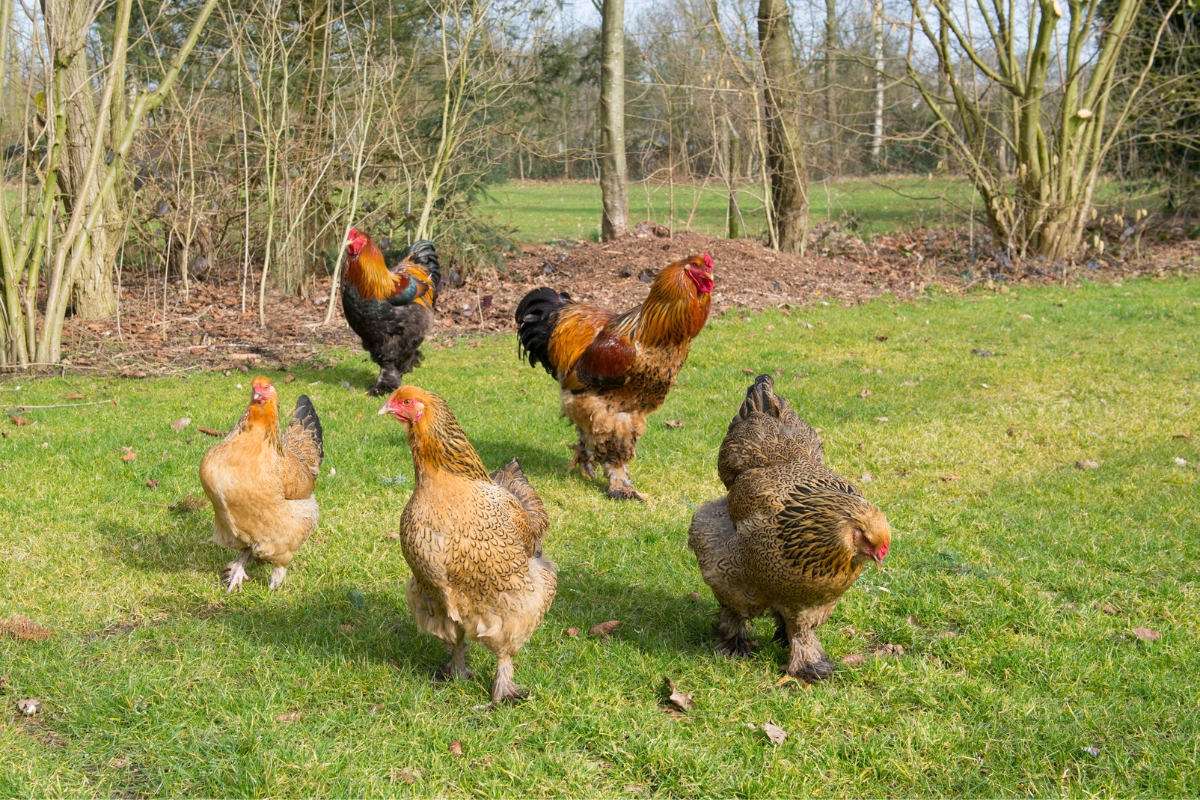
Temperament
Brahmas have a commanding presence, but these giant birds are as sweet as can be. They’re not easily frightened due to their size. Sure-footed and confident, Brahmas have a kind demeanor that makes them excellent family pets.
Brahmas aren’t flighty in the slightest. They actually struggle to fly and won’t jump over fences. Because of this, they do pretty well in confinement (although I always advocate for giving your chickens as much space as possible, especially when they’re so large!).
Brahmas aren’t terribly chatty, although roosters are roosters and will crow. They really love their owners– if you have a flock with Brahmas, expect to be greeted by some happy chickens! Give them food and they’ll be even happier.
As gentle giants, Brahmas do not bully other breeds. They sit in the middle of the pecking order–they’re so big that they aren’t picked on easily, but they don’t start fights.
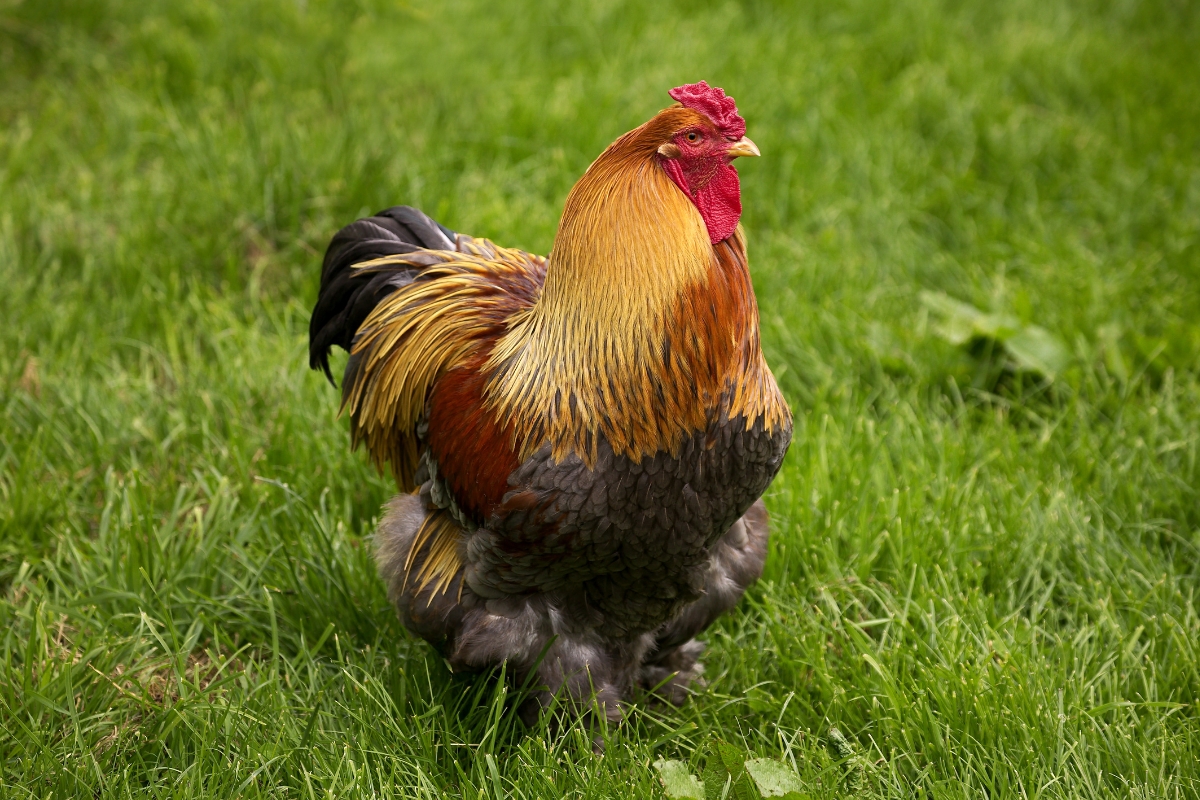
Hardiness
The robustly-built Brahma is a hardy bird. It tolerates the cold very well–the small peacomb (which prevents frostbite), large body size, and dense feathers all contribute to its hardiness. You’ll find Brahma hens laying well through winter when other chickens have stopped, so this is a great breed if you want year-round egg production. Like all other chickens, they should have access to a dry, warm space with proper insulation during the cold winter months. Wetness is not well-tolerated.
Brahmas are much better adapted to the cold than they are the heat. They don’t do well in hot, humid climates. Make sure that your Brahmas have access to plenty of shade and water at all times.
Brahmas aren’t likely to attract many aerial predators. Their size makes it difficult for a hawk to want to take off with them. Land predators, on the other hand, find Brahmas to be easy prey, since Brahmas can’t run very quickly or fly to evade predators.
Egg Production
While Brahmas started out as meat birds, they’re now known for their winter egg production. A hen will lay three to four medium-large eggs per week.
Brahmas will start laying eggs at around 6-7 months, which is a bit later than breeds created specifically for egg production.
While not as productive as egg-focused breeds, Brahmas produce a considerable number of eggs for their size and heritage. Brahmas are most productive during cooler months, specifically October through May, although this might differ among individuals. If you want a hen that will continue to produce eggs despite the cold and decrease in light, choose a Brahma!
Egg Color
Brahma eggs are light or creamy brown in color. They’re also much smaller than you’d expect in proportion to the body size of the hens.
Meat
You can definitely eat a Brahma chicken. Their heavy, huge bodies provide a lot of meat. From the 1850s until the 1930s, Brahmas were the table bird, which was part of their popularity.
Brahmas are good broiler chickens, but they do take a bit of time to mature. They reach their full size at around a year. Nowadays, most Brahmas are butchered at about 8-10 weeks old, well before they reach their full potential. The meat that they produce is tender and flavorful.
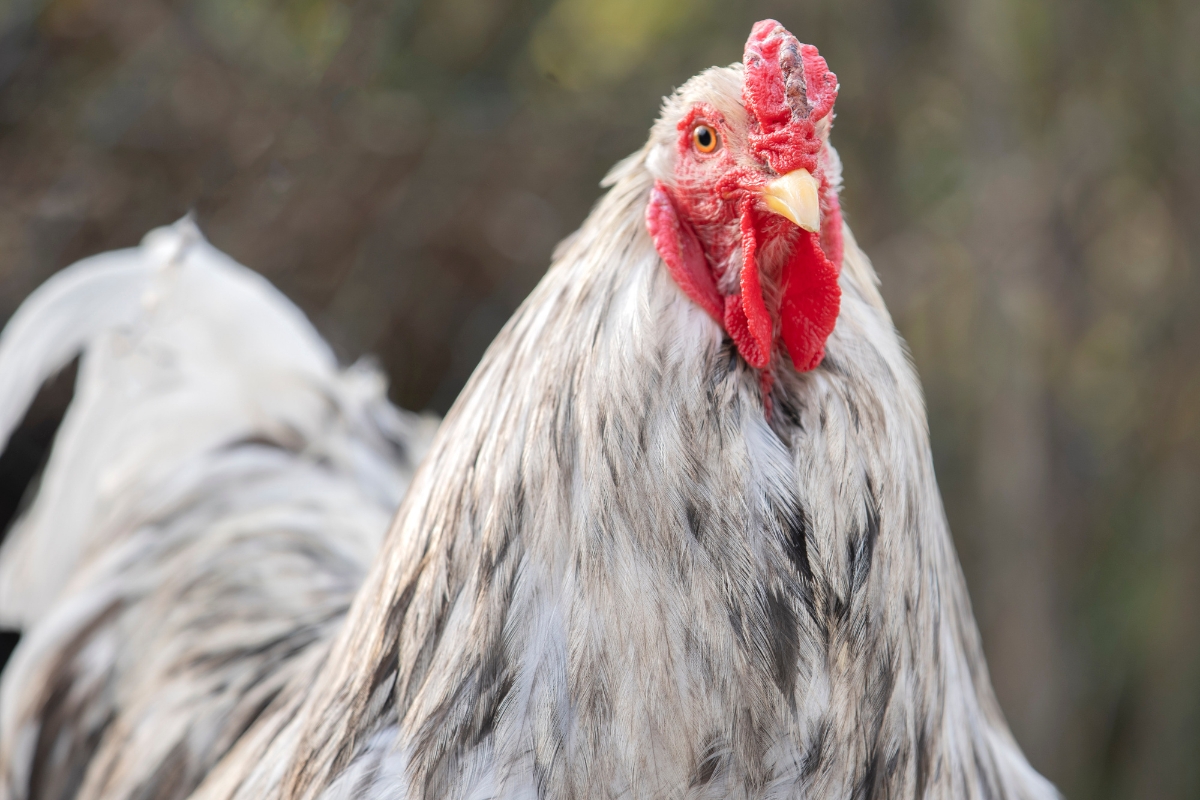
Broodiness
Brahmas can be broody and happily sit on their nests; ultimately, they sit in the middle of the broodiness scale. The broodiness of Brahma hens varies depending on the time of year–warmer months seem to trigger Brahma hens to sit on their eggs for longer periods of time.
If you’re considering a Brahma hen to hatch eggs or raise chicks, keep in mind that they are large. Sometimes, a chick might get injured or an egg cracked if momma isn’t careful.
Foraging Ability
Brahmas, as large chickens, eat a lot–they require a lot of protein to maintain their physique. Brahmas enjoy foraging and enjoy free range, but due to their size, they’ll need to be provided with plenty of chicken feed. It’s pretty fun to watch one of these giant chickens stampede after flies.
Cross Breeds
Brahmas are good multipurpose birds, and cross-breeds exist to make them even better for specific purposes. Cornish crosses, which are fast-growing meat birds, are crossed with Brahmas to create large, quickly-growing chickens.
Common Health Issues
Some common health issues that you’ll have to look out for in Brahmas are parasites and bumblefoot. Otherwise, Brahmas are a very healthy breed of chicken overall.
A Brahma’s legs are covered in dense, tightly-knit feathers. This makes it easy for mites, lice, and ticks to attach themselves to your chickens. Scaly leg mites are fairly common. It’s not very easy to see when a Brahma contracts any of these parasites, so make sure that you’re checking their legs regularly. Depending on what kind of mites appear on your Brahma, you might need to get leg soaks or medication to get rid of them and to heal the wounds caused by parasites.
Wet feet are the bane of chicken breeds that have feathered legs. The Brahma is no exception. Having cold, wet feet in the winter results in frostbite. Make sure your Brahmas live in a place free of moisture, drying their feet if things get too wet and cold.
Because of their size, Brahmas also easily develop bumblefoot. Bumblefoot is an infection of the foot pad of chickens, caused by the Staphylococcus aureus strain of bacteria. This usually happens when something breaks the chicken’s skin–stepping on a splinter, rocks, or wires, for example, can all open up a wound that will result in bumblefoot. A hard core or kernel grows on the chicken’s foot pad. If left untreated, bumblefoot can be fatal. It’s easier for Brahmas to get wounds on the bottoms of their feet because of the pressure of their weight on the ground.
If you catch the signs of bumblefoot early, you might be able to treat your chicken on your own. Otherwise, see a vet.
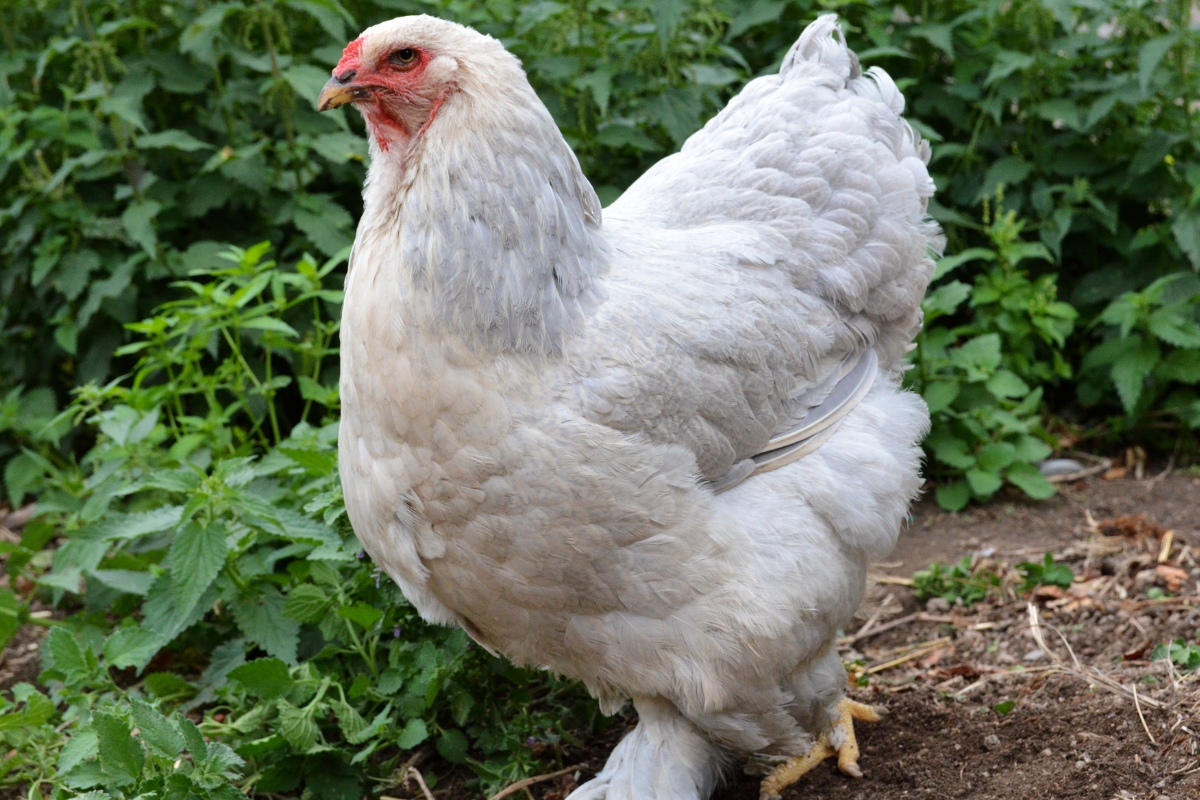
Brahma Chicken FAQs
Hopefully the big Brahma has caught your eye–they’re hard to miss, and even easier to love! Here are some commonly asked questions about these gentle giants:
Are Brahma chickens friendly?
Yes, Brahma chickens are extremely friendly. Nothing much rattles them because of their size. They are very gentle and easygoing.
Are Brahma chickens good egg layers?
Brahma chickens are good egg layers, especially through the winter, when their production is highest (and other chickens lowest). They lay three or four medium to large eggs per week.
What color egg does a Brahma lay?
Brahma chickens lay light brown eggs.
Are Brahma hens broody?
Brahma hens can be broody, especially during warm months. If you plan to use a Brahma hen, make sure that she doesn’t trample her eggs or chicks.
How big are Brahma chickens?
Brahmas are one of the largest breeds of chicken. The roosters weigh 10 lbs; hens weigh 8 lbs. The bantams roosters are 38 oz, and the bantam hens are 34 oz
Are Brahma chickens good for meat?
The Brahma is a large bird, producing a lot of flavorful, tender meat. It takes a full year to grow to full size, though, so most Brahmas are butchered at 8-10 weeks old.
Are Brahma chickens autosexing?
Buff Brahmas are autosexing, meaning you can tell the male and female chicks apart. A Buff male will be lighter in color than a female, which is dark and gray. Light and Dark Brahma chicks need a bit of time after hatching to exhibit differences between males and females.
Are Brahma chickens cold hardy?
Brahmas are very cold hardy, thanks to their feather density, small peacombs, feathered legs, and large body size. They do not tolerate wet conditions.
How long do Brahma chickens live?
Brahma chickens live about five to eight years.
Are Brahma chickens easy to raise?
Brahma chickens are easy to raise, as they are very friendly, agreeable, and calm. They don’t fly well at all and tolerate confinement and free-range equally well if given enough space.
Chicken Breed Guides
Looking for more chicken breed guides?
- Salmon Faverolle Chickens
- Barnevelder Chickens
- Jersey Giant Chickens
- Bielefelder Chickens
- Orpington Chickens
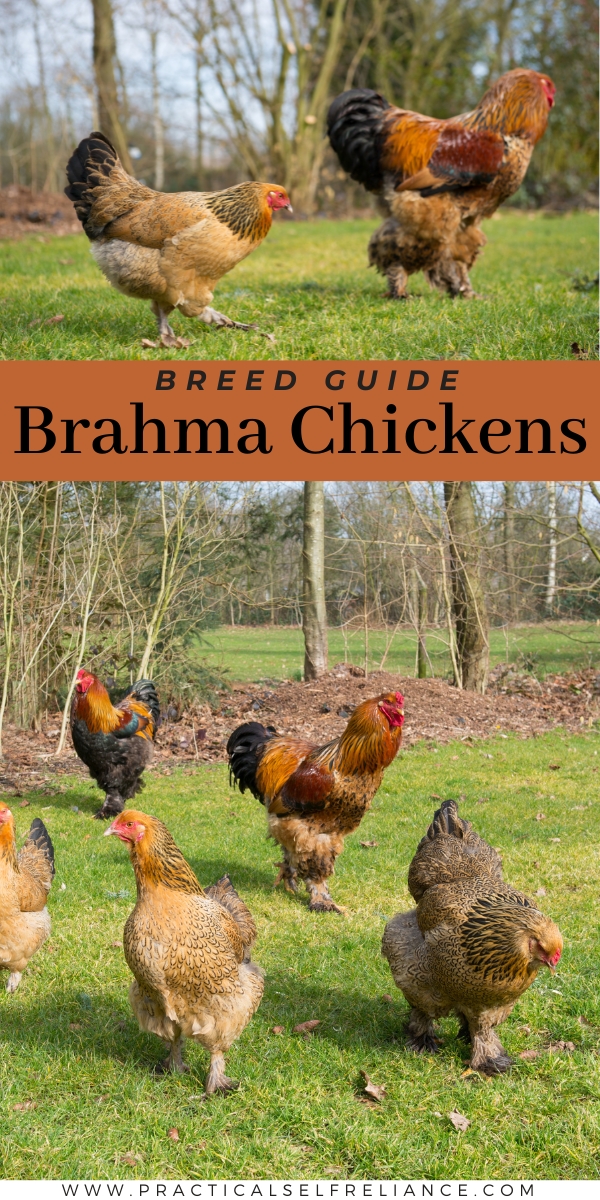

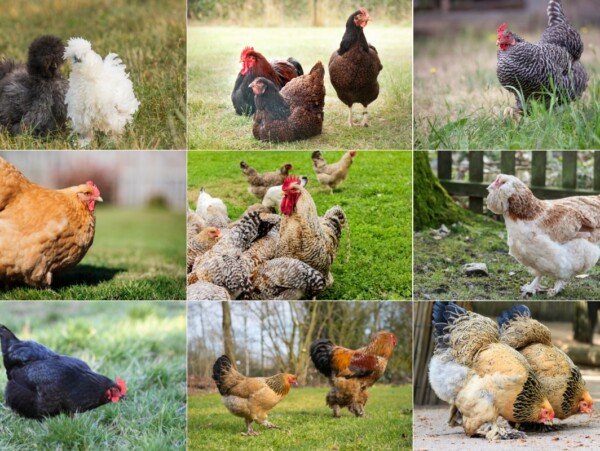
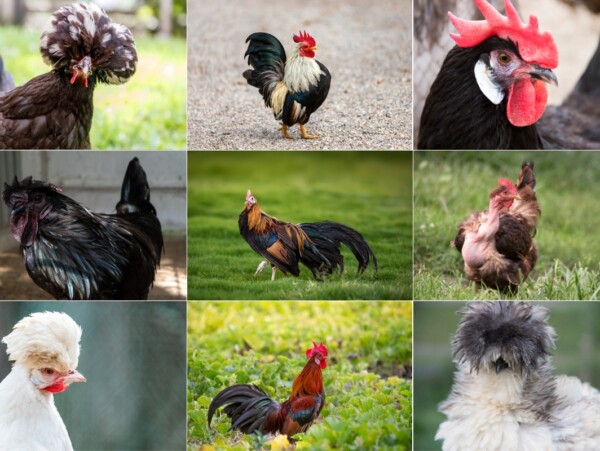
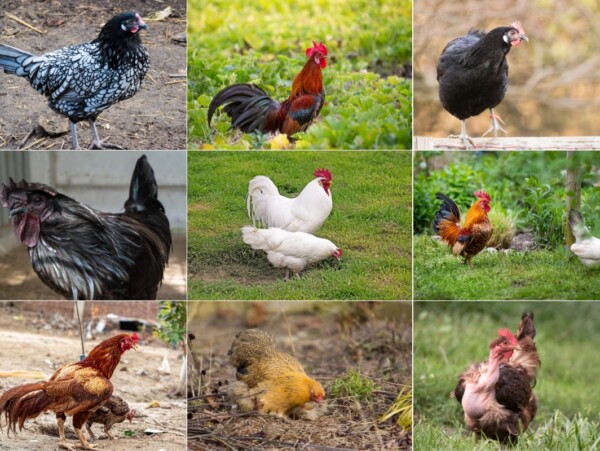










I am interested in fertilised brahma eggs and fertilised New jersey giant eggs kindly help please
If you don’t have anyone local to you that sells them, you can check with a reputable hatchery online. They often sell both chicks and fertile eggs.